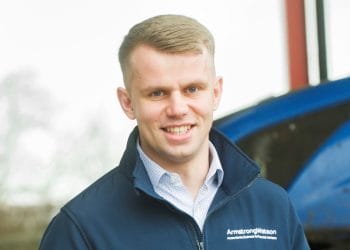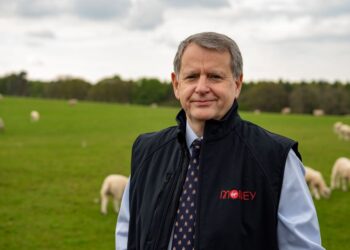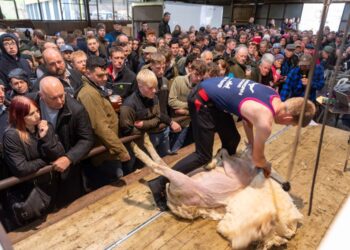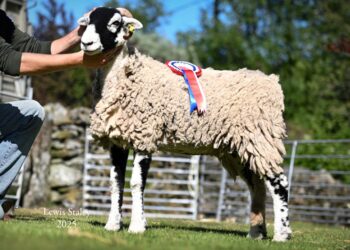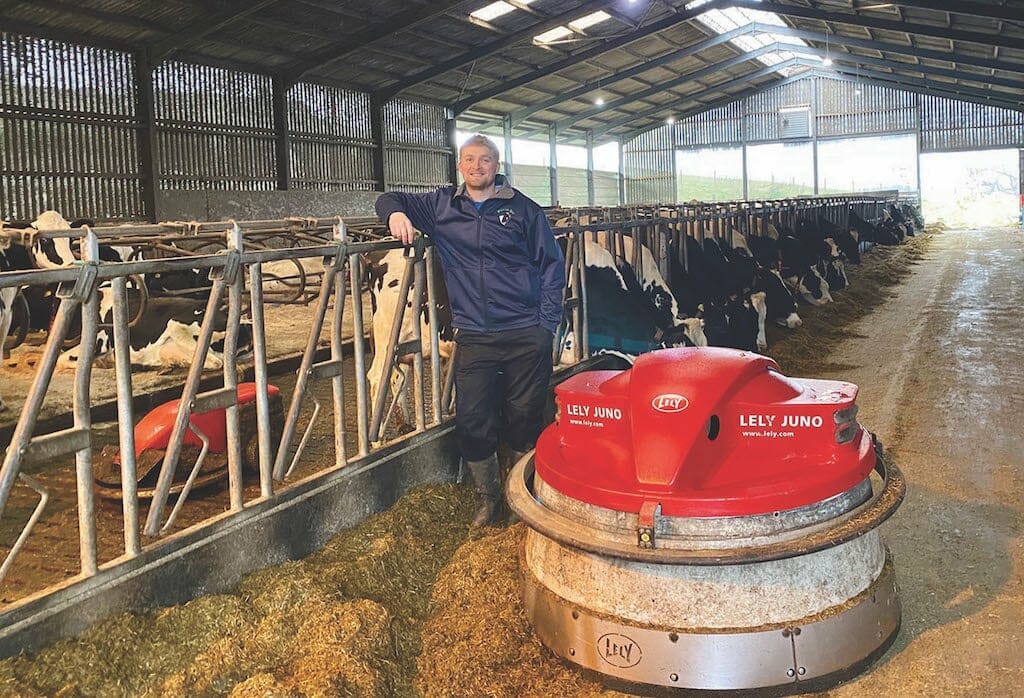
Robots are helping to improve herd performance, health and welfare on dairy farms across northern England — and the Chippendale family, who farm at Wharton Hall, Kirkby Stephen, are among those reaping the benefits of this technology.
“We were one of the first in Cumbria to install milking robots towards the end of 2011,” said Adam Chippendale.
“Nine working years later, and over 500,000 milkings, each and all four Astronaut A3s are still going strong.
“In fact, I’d go as far as saying, our A3s are ageing like a fine wine, and we reckon they paid for themselves within seven years.”
Adam, together with his father Mark, manage the Wharton Hall pedigree herd of 220 pedigree Holstein cows on their 700 acre LFA unit, which also carries 1,100 breeding ewes.
Adam said: “The 220 cows are currently averaging 11,000 litres over 305 days at 4.11 per cent butterfat and 3.4 per cent protein.
“That yield is on average 1,500 litres more than previously while we were milking through a conventional herringbone parlour.
“The milking robots have also enhanced overall herd performance. The robot’s T4C software records a mass of now essential real-time data on health and productivity both of the herd and individual cows, picking up on health issues before they manifest themselves.
“For example, mastitis incidence has reduced and we’ve cut back on antibiotic usage by 30 per cent. Neck collars help to detect heats, and they’ve contributed to reducing calving index from 400 to 382 days.”
While the milking robots are central to the unit, in the last two years the Chippendales also invested in a Lely Juno feed pusher, which is programmed to push up the TMR to the feed fence 12 times a day.
According to Adam, this has also contributed to yield improvement and paid for itself many times over.
“We continue to feed out the TMR once a day, he said. “However, we used to push it up to the feed fence four times a day with a tractor and tyres, and it was one of those jobs that sometimes never got done.
“Nowadays, the robot is guaranteed to keep fresh feed in front of the cows 24/7, resulting in TMR intakes increasing by an average of 3kg a day fresh weight, whilst wastage has been reduced to an absolute minimum.
“That’s one of the robot’s real benefits — I come out at 6am and the troughs are squeaky clean; it’s saving us time cleaning out the troughs and they’re ready for the next feed out.
“For the cows, we’ve also noticed that a full trough reduces the reaching, so there’s less stress on her neck and front claws, and since the feed is being pushed up so frequently, each one has an equal opportunity for fresh TMR, even the shyer ones.
“The robot periodically goes back to the dock to recharge.
“Running costs are minimal, amounting to a few pence per day. It’s saving us several hours a week in labour, it’s also saving diesel and it’s freed up the tractor.”
That is not the end of the robots operating in the unit, which also features a Discovery 90 SW automated slurry scraper.
“This robot is programmed to run every hour, scraping the slatted passageways, after which it returns to the docking station to recharge,” said Adam.
“We used to have automatic scrapers which we found unreliable and accompanied by high running costs.
“However, since we swapped for the robot, apart from its minimal running costs, cow health and welfare has vastly improved.
“There’s little splashing, so their legs, tails and udders are cleaner, and their feet are also cleaner — digital dermatitis is running at an all-time low.
“Cleaner cows are also contributing to cleaner milk. Annual average cell count stands at SCC 130.
“Another great advantage is muck is no longer being dragged on to the cubicle beds, so they are kept a lot cleaner, too.”
Adam added: “The robot feed pusher and slurry scraper are two indispensable pieces of kit on the farm, while, looking back, the milking robots were the best investment decision we’ve ever made. It took some time to convince dad, but he now agrees with me.
“As well as improved performance and labour savings, I’m now able to manage the entire herd myself with help from our apprentices, and then have time to spare to actually manage the cows and in turn the business. I can even manage the herd while on holiday from the Lely app on my phone.”






















